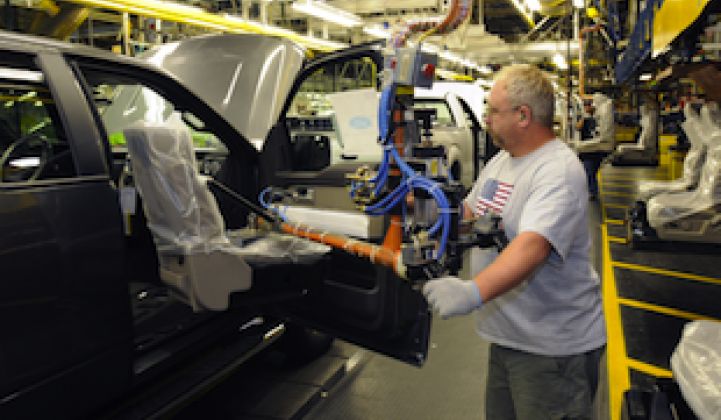Certain politicians are constantly complaining that strict efficiency and pollution regulations are the enemy of successful business. If required to keep it clean and safe, no industry can turn a profit, they seem to be claiming. There might have been a time back in the 1980s when that rhetoric made sense, but with the technologies and knowledge we have today, fewer are buying it.
Just this week, a consortium of labor unions and environmental organizations released a series of policy recommendations designed to create jobs and increase the competitiveness of the U.S. manufacturing sector. At the top of the list? Increased energy efficiency.
Published by the BlueGreen Alliance, the Policy on Industrial Energy Efficiency report suggests that the best way to ensure continued job creation and global competitiveness in the U.S. manufacturing industry -- the world’s largest -- is to reduce the carbon pollution that causes climate change.
“At its very essence, pollution is merely wasted energy during the manufacturing process,” said David Foster, Executive Director of the BlueGreen Alliance, in a press release. “These are commonsense ideas and investments that policymakers can and should implement to reduce carbon pollution, and to create and maintain jobs by aiding companies in becoming more efficient and competitive.”
America’s manufacturing sector currently supports nearly 12 million jobs and represents $1.8 trillion worth of gross domestic product. The report suggests a variety of financial and legislative strategies that can keep these numbers moving in the right direction, including:
- Improving the existing federal Investment Tax Credit for combined heat and power (CHP), integrated systems that simultaneously generate electricity and useful thermal energy, such as steam, from a single fuel source.
- Revitalization of the 48C Advanced Energy Manufacturing Tax Credit -- a successful federal program that invested $2.3 billion to leverage $5.4 billion in private funding at 180 manufacturing facilities, creating jobs and economic growth around the country.
If properly incentivized and implemented, these measures could help manufacturers of all shapes and sizes reduce energy consumption, thereby opening up new pockets of revenue. The effects would be beneficial, as well. By making the manufacturing sector more efficient, the United States could reduce primary industrial energy consumption 21 percent by 2020, saving U.S. industry $47 billion per year, according to a McKinsey & Company report.
Download the full report here.
***
Editor's note: This article is reposted in its original form from EarthTechling. Author credit goes to Beth Buczynski.



